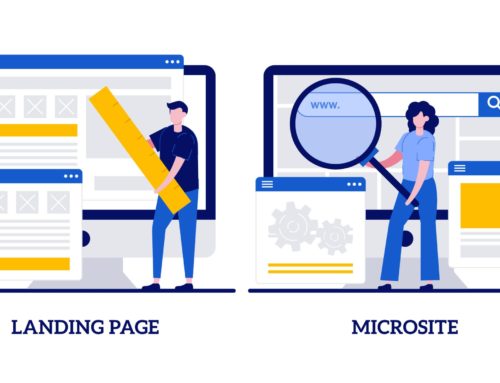Building a big, complex, very real website takes a lot of time and money. You’ll probably have to hire a specialist and go back and forth for every functionality that you need. With this in hands, you’ll probably be wondering: Isn’t there an easy way to do it? Well, there sort of is, and that’s what we call Microsites, and today we’ll be discussing their pros and cons in the Marketing field.
First of all, we must know what we are talking about, so what are Microsites and why does Marketing care about it? It’s a website that looks very real, but it’s much simpler, hence, cheaper and easier to build. They are mostly used to get specific about one particular topic and can link or not to the “main” website.
In the Marketing industry, there are a bunch of reasons to choose a Microsites strategy, meaning creating a bunch of microsites instead of a big one, and there are a bunch to go with old school real big and complex websites. So today, we are going to review the pros and cons of choosing to go with this strategy, shall we?
Good for SEO
Even when SEO keeps changing and updating its process every day, there are a few things that probably won’t change much, and keywords are one of those things. Basically, the equation here is pretty simple: the more sites you have that talk and link to your main website, the more you help your SEO strategy. Big point for Microsite marketing here, because the amount of content you can get from having so many sites has very little competition with any other content generation strategy.
You can get very specific
Another great advantage of Microsites is that, since they are very quick to create and there’s really no limit, you can create one for each thing you want to. When you are browsing through a big website, sometimes it’s really annoying to have all these options and sections to browse through, imagine when even those sections have their own inner divisions. When using Microsites, there is no need to have users going through your minotaur-maze because you have them separated in a very clean and specific way.
Targeting the right audiences
Since you are being very specific, you’ll be minimizing your risks of having a lot of irrelevant traffic coming to your website. You know how sometimes your CTR seems to have absolutely no correlation to your actual conversion numbers? Well, when choosing such a specific subject for a site, you can be sure anyone who goes there is actually interested in being there.
Reaching for new audiences
When you are running a website, you probably have, overall, an average audience that is interested in your product and so they go to your website. Given this situation, in general, you won’t have many opportunities to diversify your traffic. But Microsites give us a great window to bring new people to the stage. A great way to do this, for example, could be creating a Microsite about something related to our site, but not so much that it could actually be a section of it. That way, we’ll have a lot of already interested people going there and also a bunch of new ones that decided to give it a try.
It may get expensive if you don’t know when to stop
As our first con, we have this issue that may come along if you abuse the Microsite technique. Unless you yourself are a specialist in Microsite building, you’ll probably need to hire someone to get that job done. While building one Microsite is much quicker and cheaper than building a big complex one, costs may go up if you choose to develop an extensive Microsite Marketing strategy and have too many of them.
It may take more time (calendar days)
Same as before, building one small Microsite is quick and easy, but developing a large-scale strategy may not be like that. I have a theory that whenever we have something to do, we need to divide it into whether it takes less than 3 minutes or more. If it’s less, then you should get it done right now. If it’s more, then you should settle a date. Building a site takes a lot more than 3 minutes, and building a whole bunch of sites, will probably take much more. This means that, between the actual building and the back and forth of every site, the Microsite Marketing strategy probably will take more calendar days.
So basically, to conclude, obviously Microsite Marketing is not a strategy for everyone, and probably requires a lot of analysis to do. Specifically, you should ask yourself the next few things: Am I reaching the number of people that I want? Could I diversify my product in order to do so with my audience? Would it be helpful to generate that amount of content? Do I have ideas that I’d like to develop in? Can I afford to do it? Do I have time to go through it?
If most of your answers to that were “yes”, then for sure you should try and go for the Microsite Marketing strategy. However, if your answers were mostly “no”, then don’t feel bad about it. Just like any other strategy, it’s not meant to be for everyone and especially not for everyone just at any time. Perhaps nowadays you don’t have the time, money or ideas, but in a couple of years you do and then you choose to go with it. Whichever is your case, then we can assure you that Microsite Marketing, when correctly applied, can be a great source of profits.






Mora is a PPC Analyst at Hellbent Digital at work, and a theater nerd when not at work. And it turns out understanding theater—that is, how to put on compelling live shows that engage the audience—is a very useful skill for understanding digital marketing.